From the Sperry Gardens: August 30, 2018
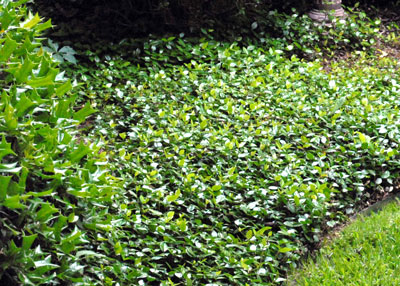
Bed of Asian jasmine flanks the Sperry house with St. Augustine and dwarf Chinese hollies alongside.
I’ve always been a plant geek. Even in junior high, I was collecting and growing plants in our backyard east of the Texas A&M campus. By high school, I was doing full-fledged landscape contracting in Bryan/College Station after school most days and all day on Saturdays.
We did most of our shopping in Houston, because College Station was still very small, and that’s where I first saw regular Asian jasmine being used as a groundcover. Texas A&M’s grounds people were bringing it to the university, and suddenly it seemed that groundcovers were the newest trend in fine landscape design everywhere I turned.
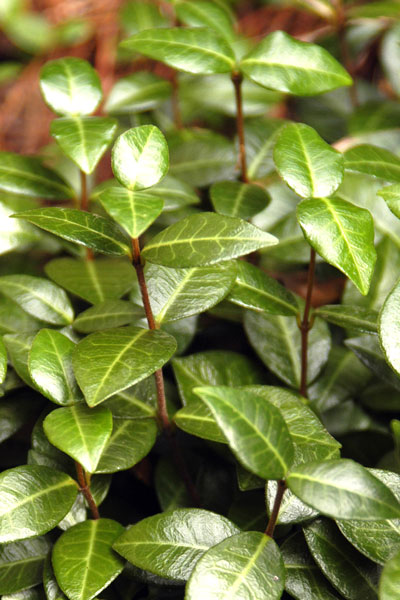
As it matures, foliage of Asian jasmine becomes leathery, deep green and evergreen.
Not to be left behind, I rototilled up big beds around our house, and I set out my transplants from Cornelius Nursery in Houston. They grew and they spread, and I was loving my gardening life. I was landscaping like the pros.
When I finished my degrees from Ohio State and two years of teaching in Shelby, Lynn and I moved to Dallas in 1970 so I could work for the Texas Agricultural Extension Service (I still like the old name). By then Asian jasmine was everywhere. New cultivars were hitting the market with all manners of foliage.
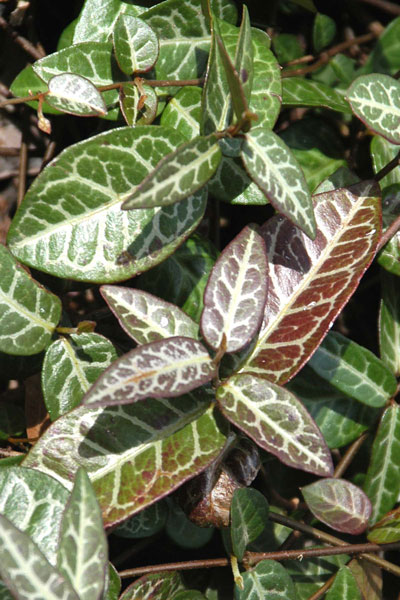
Bronze-leafed Asian jasmine provides a nice and different look to this popular groundcover.
About the time we moved to our rural home in 1978, I found a one-gallon pot of variegated Asian jasmine at Germany’s Nursery in Fort Worth, and I planted it in a strategic little place along our new driveway. It’s grown and spread over those years. I’ve kept it trimmed back somewhat, but it now covers probably 200 square feet, and it brightens its dark little corner of our landscaping entry.
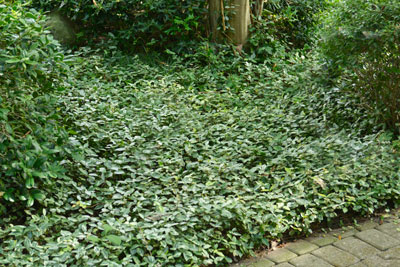
Variegated Asian jasmine cheers a shady bed along our driveway.
I’m not always a big fan of variegated foliage, especially in areas like DFW, where alkaline soils leave too many plants yellowed for lack of iron. But, white variegation is crisp and cheerful, and in moderation, it’s a grand addition to a small spot in your landscape.
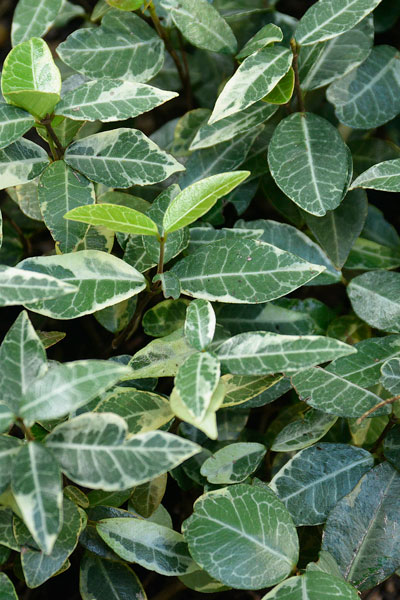
Crisp white color of leaves of variegated Asian jasmine adds a nice look.
In all my years growing Asian jasmine in its various forms, I have never seen the first insect or disease cause it any harm. Its only foes: Texas wintertime temperatures, particularly in the northern half of the state. It sometimes browns to the ground, but it’s always come back faithfully. And don’t let it dry out in summer. Learn to recognize the subtle change in leaf color and soak it immediately if it begins to get dry.
